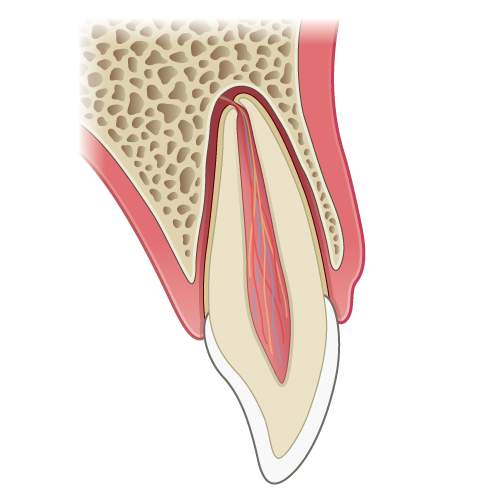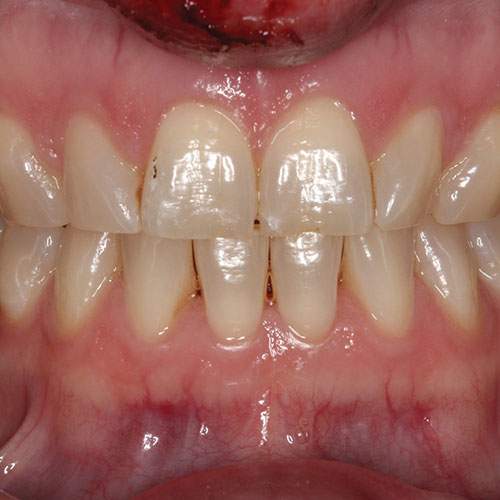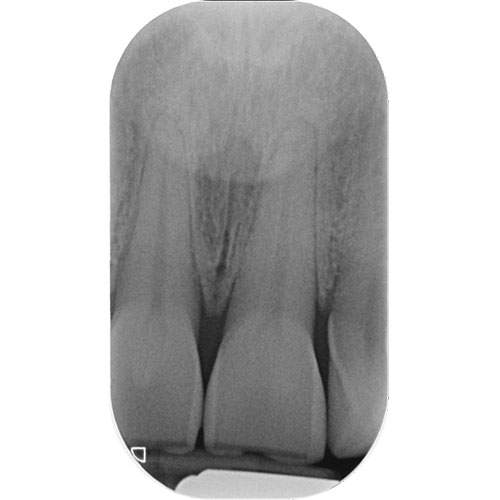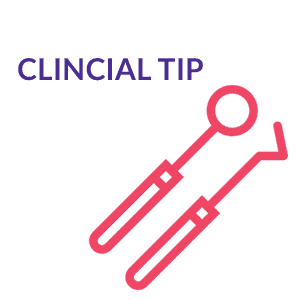Concussion
Concussion
Concussion is an injury that involves mild stretching or crushing of the tooth-supporting structures.
Clinical findings
Concussed teeth are:
Tender to touch
Not mobile
Not displaced out of position with no change in the occlusion
Positive to sensibility testing (see clinical tip below).

Illustration: Longitudinal section of a tooth showing a concussion injury.

Clinical image: Labial view showing concussion of the UL1.

Radiograph: Concussed UL1.
Radiographic findings
A radiograph of a concussed tooth should show:
A healthy-looking tooth
No obvious widening or changes in the periodontal ligament.
Management (for primary and permanent teeth)
Reassure patients (and their parents/ carers)
Advise a soft diet for 2 weeks
Encourage patients to brush their teeth normally as soon as possible
Tooth discolouration soon after the injury may be transient. Patients should therefore be reassured and no diagnosis of necrosis made in the absence of any other signs or symptoms (particularly within the first three months after the injury)
Monitor the pulp for 1 year
Follow-up thereafter is as per the scheduled review for that patient.

“Sensibility testing is a weak sign and often not reliable or relevant when a patient first presents with a traumatic dental injury. Delaying these tests till the next appointment avoids further patient discomfort on the day of the injury. A baseline recording of sensibility should be recorded at the next visit. Recordings at subsequent visits can then be used to monitor the status of the pulp over time.”
-Ms Serpil Djemal
Monitoring: The pulpal response should be monitored at subsequent appointments and a follow-up period of one year is advised.




